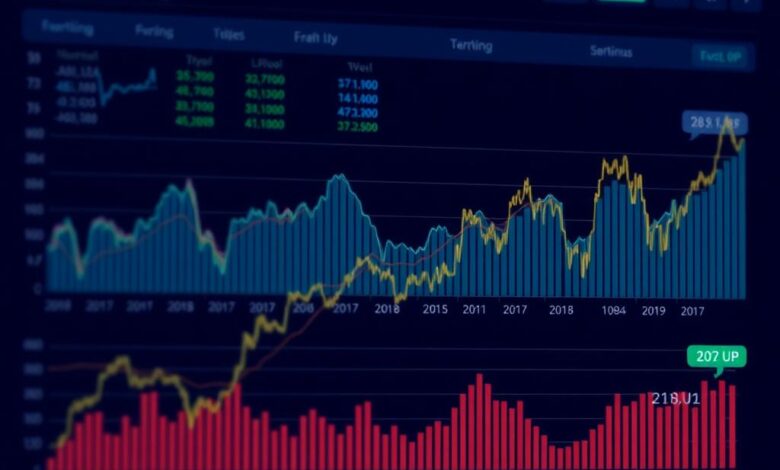When is the right time to sell your investments?

Identify the right moment to implement your exit strategy by analyzing market trends and individual asset performance. Historical data shows that selling after a sustained price increase, ideally when gains reach a specific percentage (often between 15-20%), can significantly enhance profitability. Timing can be the difference between a standard return and substantial profit.
Monitor economic indicators closely; events such as interest rate changes or geopolitical developments can create optimal conditions for liquidation. Establish clear benchmarks based on financial goals and risk tolerance to determine when to act decisively. Avoid emotional decisions; a disciplined approach grounded in research will safeguard your returns and ensure you capitalize on favorable market conditions.
Consider diversifying your portfolio before executing your strategy, as this may mitigate risks associated with sudden downturns. Always have a contingency plan ready, allowing for adjustments based on real-time assessments of market dynamics. Remember, a well-thought-out exit plan is not just about timing but also about securing gains effectively.
Understanding Market Trends
Analyze historical data to identify patterns that signal optimal moments for exit strategies. Use tools like moving averages and momentum indicators to gauge market sentiment. Recognize that price fluctuations often precede broader economic shifts, providing hints for strategic profit realization.
Monitor sector performance closely; sectors can diverge significantly during various market cycles. For instance, technology may surge while consumer staples lag. This differentiation can reveal opportunities for reinvestment once initial gains have been secured.
Consider the following table as a guideline for assessing market trends based on historical performance:
Stay informed about macroeconomic factors such as interest rates and inflation, as these elements directly influence market dynamics and can dictate the best moments to capitalize on profits.
Your ability to read these signals effectively will enhance your decision-making process, allowing you to maximize returns while minimizing risks associated with impulsive actions in unpredictable markets.
Indicators of Peak Value
Monitor key performance metrics such as price-to-earnings (P/E) ratios and earnings growth. A significantly high P/E ratio compared to historical averages may signal overvaluation, prompting a reevaluation of your exit strategy.
Watch for market sentiment indicators, including investor surveys and the volatility index (VIX). Elevated optimism often precedes corrections. Align reinvestment plans with these signals to maximize gains.
Technical analysis tools like moving averages can reveal trends. A stock trading well above its 200-day moving average could indicate peak value, suggesting it’s time to consider liquidating portions of your portfolio.
Observe macroeconomic factors, such as interest rates and inflation. Rising rates can compress profit margins, negatively affecting stock prices. Adjust your timing based on these economic indicators to safeguard against potential downturns.
Finally, remain aware of sector-specific news and developments that might influence asset values. Significant announcements or changes in regulations may create optimal conditions for exiting positions while securing returns.
Tax Implications on Sales
Consider implementing a strategic exit plan that accounts for tax liabilities. Short-term capital gains, applied to assets held for one year or less, are taxed at ordinary income rates, which can significantly reduce your profit margin. Aim to hold investments longer than a year to benefit from lower long-term capital gains taxes.
Evaluate your current tax bracket before deciding on liquidation. A higher income in a given year could push you into a higher tax bracket, impacting the net returns from your sales. Planning sales during years with lower projected income can minimize tax burdens and maximize gains.
Reinvesting profits from sales into tax-advantaged accounts such as IRAs or 401(k)s can defer taxes and enhance overall wealth accumulation. This strategy allows for growth without immediate taxation, optimizing the potential of your portfolio.
Be mindful of state taxes as well; they can vary widely and affect total returns. Certain states impose additional taxes on capital gains, so understanding local regulations is key to effective financial planning.
Utilizing losses to offset gains is another beneficial tactic. Tax-loss harvesting involves selling underperforming assets to realize losses that can counterbalance taxable profits, ultimately improving your exit strategy.
Emotional Factors in Timing
Prioritize a clear exit strategy before engaging in the market. Emotional reactions can lead to impulsive decisions that jeopardize potential profits. Establish predetermined criteria for selling based on your financial goals, ensuring that emotions do not cloud judgment.
Market fluctuations often induce fear or greed, impacting rational decision-making. When gains are substantial, the temptation to hold on too long can arise from a desire for even greater returns. Conversely, during downturns, panic selling might seem appealing but can result in losses that could have been avoided with a steady approach.
Utilize tools such as stop-loss orders to mitigate emotional responses. These mechanisms help maintain discipline and encourage adherence to your planned profit-taking strategy regardless of market sentiment. A well-defined action plan reduces stress and ensures timely exits based on objective data rather than subjective feelings.
Keep in mind the impact of external news and economic indicators. Negative headlines may provoke knee-jerk reactions, while positive reports can inflate confidence. Always return to your established benchmarks and resist the urge to make drastic changes based solely on transient events.
Incorporate regular reviews of your portfolio performance as part of your strategy. Reflecting on past decisions helps identify patterns influenced by emotions, allowing you to refine future actions for improved outcomes.
Ultimately, maintaining a disciplined mindset fosters better decision-making and enhances the likelihood of realizing gains without succumbing to emotional volatility.
Strategies for Exit Points
Establishing a clear exit strategy is paramount to maximizing profit and securing gains. Consider the following approaches:
- Percentage-based exits: Set predefined profit targets, such as selling 25% of holdings after a 20% gain. This method locks in profits while allowing for potential further appreciation.
- Trailing stops: Use trailing stop orders to protect gains while remaining open to upward movement. For example, setting a trailing stop at 10% below the current price ensures you capitalize on peaks without losing significant value.
- Time-based exits: Define specific timeframes for reevaluating investments. For instance, assess performance quarterly; if an asset underperforms against benchmarks, consider liquidating.
Reinvestment plays a critical role in optimizing returns. After executing an exit strategy, promptly reinvest profits into diversified assets or emerging opportunities to compound wealth effectively.
- Dollar-cost averaging: Reinstate funds gradually into new positions rather than lump-sum investing to mitigate risks associated with market volatility.
- Sector rotation: Shift capital from overperforming sectors to those poised for growth based on economic indicators, ensuring alignment with market trends.
A well-thought-out exit plan not only enhances profitability but also builds resilience against market fluctuations. Regularly review and adjust strategies in response to changing conditions and personal financial goals.







